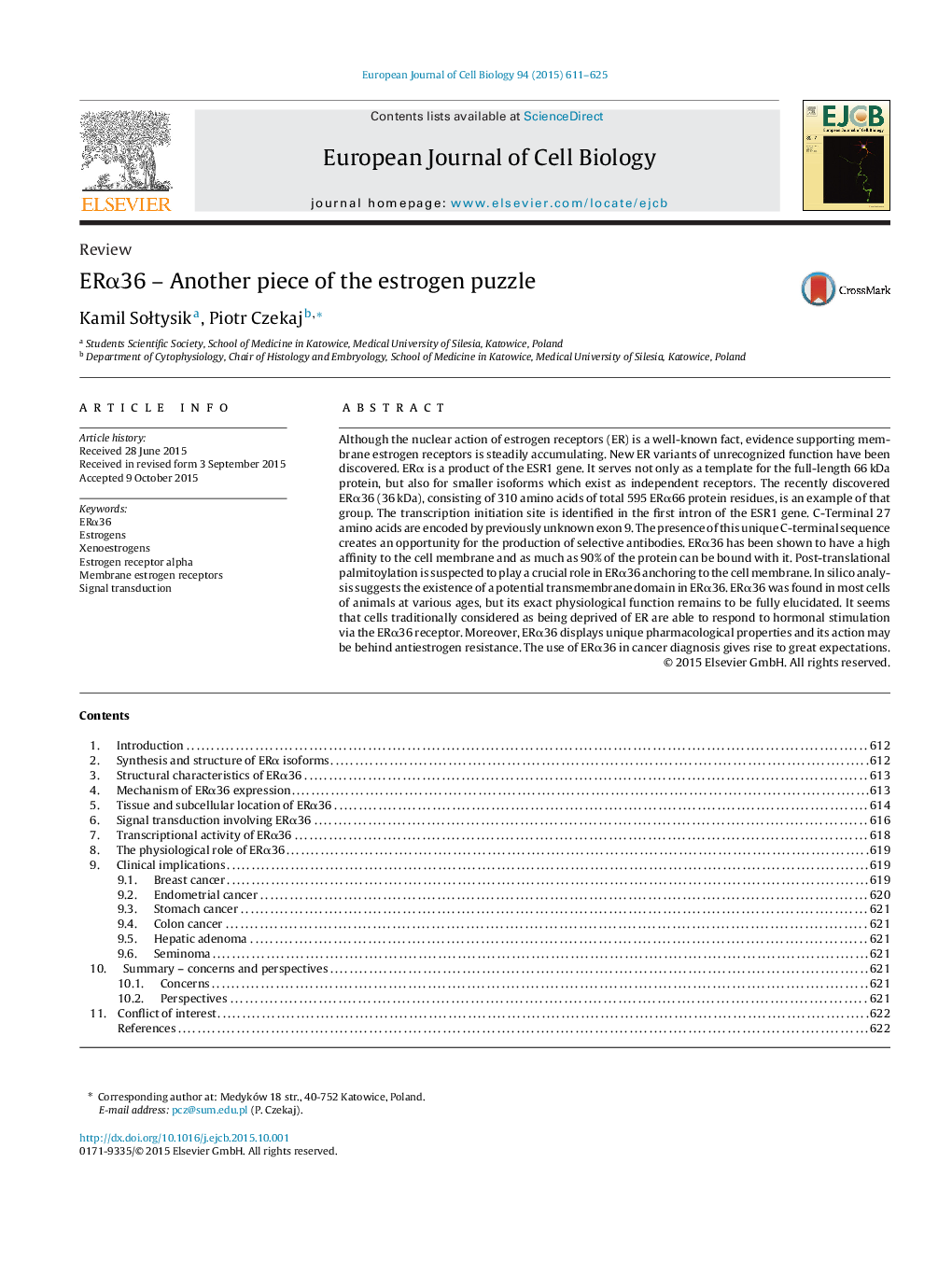| Article ID | Journal | Published Year | Pages | File Type |
|---|---|---|---|---|
| 2178320 | European Journal of Cell Biology | 2015 | 15 Pages |
Although the nuclear action of estrogen receptors (ER) is a well-known fact, evidence supporting membrane estrogen receptors is steadily accumulating. New ER variants of unrecognized function have been discovered. ERα is a product of the ESR1 gene. It serves not only as a template for the full-length 66 kDa protein, but also for smaller isoforms which exist as independent receptors. The recently discovered ERα36 (36 kDa), consisting of 310 amino acids of total 595 ERα66 protein residues, is an example of that group. The transcription initiation site is identified in the first intron of the ESR1 gene. C-Terminal 27 amino acids are encoded by previously unknown exon 9. The presence of this unique C-terminal sequence creates an opportunity for the production of selective antibodies. ERα36 has been shown to have a high affinity to the cell membrane and as much as 90% of the protein can be bound with it. Post-translational palmitoylation is suspected to play a crucial role in ERα36 anchoring to the cell membrane. In silico analysis suggests the existence of a potential transmembrane domain in ERα36. ERα36 was found in most cells of animals at various ages, but its exact physiological function remains to be fully elucidated. It seems that cells traditionally considered as being deprived of ER are able to respond to hormonal stimulation via the ERα36 receptor. Moreover, ERα36 displays unique pharmacological properties and its action may be behind antiestrogen resistance. The use of ERα36 in cancer diagnosis gives rise to great expectations.
